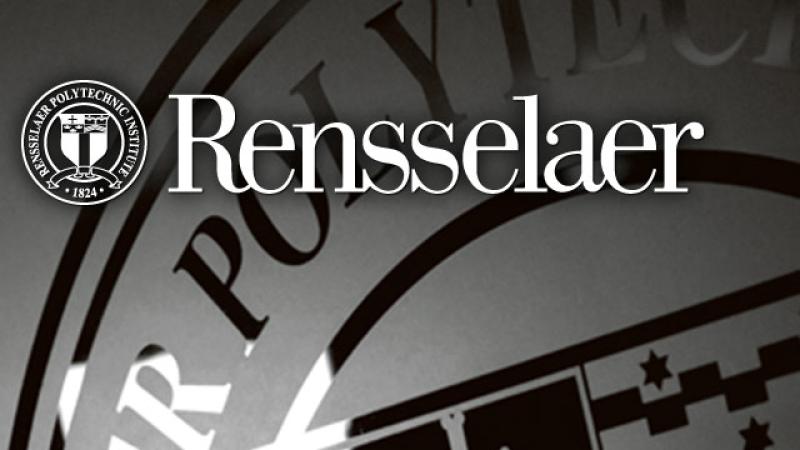Center Seeks to Expand Rensselaer Leadership in Nuclear Data Research
April 24, 2012

Nuclear engineering expert Yaron Danon has been named director of the new Gaerttner Linear Accelerator (LINAC) Center within the School of Engineering at Rensselaer Polytechnic Institute.
For years, faculty and students in the linear accelerator laboratory at Rensselaer have conducted world-leading research related to experimental low-energy nuclear physics. Now a center within the Rensselaer School of Engineering, the Gaerttner LINAC Center will grow in scope and size.
“Elevating LINAC from a laboratory within the Nuclear Engineering Program to a School of Engineering center offers opportunities for engagement by faculty and students across the school and the broader Institute,” said David Rosowsky, dean of the School of Engineering at Rensselaer. “Dr. Danon, who has led LINAC to its current level of success, is the ideal choice to serve as director of the Gaerttner LINAC Center.”
“We want as many students, faculty, and research staff as possible to take advantage of the unique equipment and expertise resident within the Gaerttner LINAC Center,” said Danon, a professor in the Department of Mechanical, Aerospace, and Nuclear Engineering. “In addition to growing the number of users, we will expand into new areas of research and seek new, diversified sources of funding for the center. It is an exciting time to be a nuclear engineer at Rensselaer.”
Most of the research taking place at the Gaerttner LINAC Center is funded by agencies within the U.S. Department of Energy. More than 10 graduate students and postdoctoral researchers conduct research in the center, along with several faculty members. Currently, the primary research thrust of the center is obtaining nuclear data for use in a variety of applications, ranging from the design of nuclear reactors and analysis of criticality to radiation damage and new nuclear medicine technologies.
The high-accuracy nuclear interaction data measured at the Gaerttner LINAC Center is used by researchers and engineers around the globe. In any nuclear technology application—from commercial power generation, naval propulsion, medical devices, or the processing and storage of nuclear materials—it is important to understand and have accurate data about neutron interactions. To design ways of storing nuclear fissile materials for these products, devices, and systems, engineers require the ability to accurately calculate and predict how the fissile material will behave.
To generate this nuclear data, Rensselaer students and faculty use tools in the Gaerttner LINAC Center to precisely measure how a wide range of metals, composites, and other materials interact with neutrons at the nuclear level. The collected measurements are expressed as a probability that the neutrons will interact with different materials called nuclear reaction cross sections. These probabilities, once measured and validated, are made public and used by engineers and scientists around the world as inputs in a wide range of engineering models and simulations.
A newly constructed facility in the Gaerttner LINAC Center will add new research capabilities in the area of nuclear criticality safety. Recently finished, the new building will house a new detection system designed to measure the probability of neutron capture, or absorption, in different materials.
The Gaerttner LINAC Center is part of the Rensselaer Nuclear Engineering Program, which is among the oldest in the nation and dates back to the late 1950s. The university bestowed its first nuclear engineering doctoral degrees in 1962, and its first nuclear engineering bachelor’s degrees in 1967.
Today, Rensselaer consistently ranks among the top nuclear engineering programs, and for several years graduated more nuclear engineering undergraduates than any other university in the United States. Currently, about 150 undergraduate and graduate students are enrolled in the Nuclear Engineering Program at Rensselaer.
For additional information on Danon and nuclear engineering at Rensselaer, visit:
- Faculty Home Page
http://www.rpi.edu/~danony - Rensselaer Gaerttner LINAC Center
http://www.linac.rpi.edu/ - Rensselaer Nuclear Engineering Program
http://www.rpi.edu/dept/ne - Rensselaer Nuclear Safety Expert To Brief Congressional Staffers
http://news.rpi.edu/update.do?artcenterkey=2982 - Patient Safety: Reducing the Risks of Radiation Exposure From CT Scans and X-Rays
http://news.rpi.edu/update.do?artcenterkey=2876 - Rensselaer Secures $1.5 Million From the National Nuclear Security Administration To Launch New Nuclear Safety Research Program and Lab
http://news.rpi.edu/update.do?artcenterkey=2856 - Department of Mechanical, Aerospace, and Nuclear Engineering
http://mane.rpi.edu/